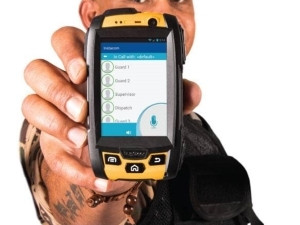Johannesburg, 15 Feb 2017

It is a fact that the invention of two-way radio technology created new, ground-breaking communication technology for mission-critical services, says Roland van der Walt, Sales Director at Instacom.
It created the opportunity for wireless communication over radio frequency. Two-way radio communication became the staple until the introduction of cellular networks. Although this technology created a platform for communication over a larger distance, it certainly had its drawbacks. Its biggest shortcoming was the inability to allow one-to-many communication that was so easily provided by two-way radio.
Then there was the "no network reception" issue that motivated mission-critical industries to stick with their old faithful two-way radio solutions instead of moving to the younger counterpart, cellular communication.
The evolution begins...
The fast pace set by cellular technology did, however, impact the two-way radio industry and forced suppliers to give their old, outdated walkie-talkie a much needed revisit, and the product evolved. Two-way radio was improved to provide larger coverage and easier connectivity. This, however, came at a price. The evolution of two-way radio created wealth for large, privately owned companies that charged exorbitant fees to erect and maintain the new, improved infrastructure required to increase its connectivity.
The industry was begging for an alternative... and along came trunking radios with their trunking network technology. This technology now offered even larger connected footprints than the updated two-way radio networks. Larger coverage did, however, come at a price, as the cost for infrastructure and roll-out proved very expensive. Connectivity footprints increased, but remained limited.
The evolution continues...
Digital two-way radio over digital radio networks was the next step in the race to find the best alternative to traditional two-way radio communication. This technology is more affordable then trunking or tetra, but also has some major drawbacks. High cost of roll-out and limited national and international coverage are two of the major demotivating factors that prevent traditional two-way radio users from moving to this trunking solution.
Final step in the evolution... enter push-to-talk technology
The rapid development and growth of cellular networks and advanced Internet connectivity solutions created a platform for the birth of new ways to communicate and manage this communication. The result... push-to-talk is born!
Instacom Push-to-Talk, powered by Mobile Tornado, pushes the boundaries and sets the new benchmark for two-way radio communication. Instacom's technology is finally providing a viable alternative for replacing your old, outdated two-way radio devices and networks.
Push-to-talk enables virtually unlimited coverage, no capex, no high site maintenance, very low opex cost, less hardware, more features, simplified communications, one-to-one, one-to-many or broadcast communication. Truly the superior choice in two-way communication.
Share